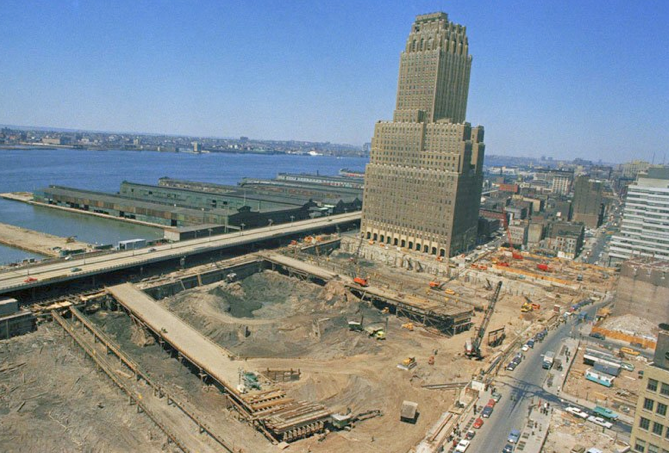Table of Contents
Download Planning for a New Northeast Corridor:

Download The Hudson Terminal Plan:

Download the Trends & Opportunities Report:

Choosing How to Invest in Transportation Infrastructure
Finally, critics are often unable to reconcile large public investments in transportation infrastructure with a lack of immediate quantifiable benefits. The thinking is that billions of dollars in should result in billions of dollars out. There is no question that investing in transportation infrastructure is a very expensive venture. However, just because benefits are not easily quantifiable does not mean that those benefits are not realized. In the first half of the 20th century, the large positive economic value derived from investments in transportation infrastructure was taken to be self-evident and major investments in commuter rail, highways, and other mass transit systems were made on this basis alone. As the city grew, these investments would end up transforming the region’s economic and social landscape profoundly. Productivity and efficiency increased as goods and services were able to reach a broader population at a lower cost. Residents and visitors were able to travel faster to farther distances. And investment in unifying transportation networks spurred investment in the urban core. Yet, it has been over 50 years since the last Hudson River crossing—the lower level of the George Washington Bridge—was constructed. So instead of asking the question of whether to invest, the better question to ask is how to invest, and how to do so responsibly?
Responsible transit investments require that government agencies look beyond the immediate future when considering the scale of proposed improvements and the desired impact on affected populations. After all, it has been over a century since a cross-Hudson rail tunnel was built. To that end, minor increases in rail capacity will have only minor benefits for the growing population of rail travelers in the region. It is important to think big when making big capital contributions to the transportation infrastructure of the largest city in the nation. Further, responsible investments should seek to capitalize on as many ancillary benefits as possible, such as fueling the growth of Manhattan’s West Side and the redevelopment of New Jersey’s waterfront communities. Nevertheless, spending should be managed efficiently, taking into consideration how to achieve the broadest impact from minimal public funding commitments. Lastly, transportation investments should restore pride in the region’s already great transportation infrastructure. By creating an effective and modern transit network, overall confidence in the system would be lifted, which would serve as a competitive advantage for the region as a whole.
The Hudson Terminal Plan proposes several responsible investments in regional transportation infrastructure. Under the Hudson Terminal Plan, cross-Hudson rail capacity would triple, securing the success of NJ Transit and Amtrak for the next century. The City of Hoboken will be able to move forward with a redevelopment plan while incorporating new connections into Manhattan for New Jersey waterfront communities along the Hudson-Bergen Light Rail system. The construction of a new, premiere rail station in Manhattan will serve as the foundation for Amtrak’s future high-speed rail network. And New Yorkers will see new mass transit improvements open up areas of Manhattan’s West Side that have been underdeveloped for generations.
It may be difficult to predict with great specificity the return on a given infrastructure investment. It is, however, easy to imagine what New York would be like without great works of transportation infrastructure such as the New York City Subway system, Grand Central Terminal, or the Brooklyn Bridge. These great public works are intertwined with New York City’s identity and have been critical to the growth of the economies of both the Garden State and the Empire State. Today, the City of New York stands at a crossroads, and the Hudson Terminal Plan is the bold transit proposal that will ensure New York and New Jersey’s long-term prosperity.

